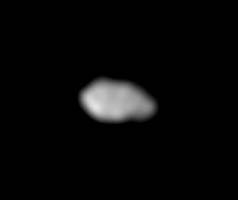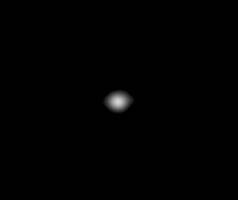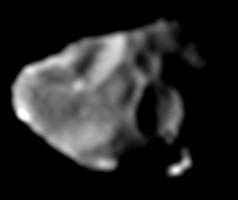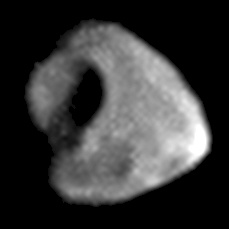Jupiter's inner moons


Jupiter's inner moons

1. Metis
Metis is the innermost of Jupiter's known satellites:
orbit: 128,000 km from Jupiter
diameter: 40 km
mass: 9.56e16 kg
Metis was a Titaness who was the first wife of Zeus (Jupiter).
Discovered by Synnott in 1979 (Voyager 1).
Metis and Adrastea lie within Jupiter's main ring. They may be the source of the material comprising the ring.
Small satellites within a planet's rings are sometimes called "mooms".

2. Adrastea
Adrastea is the second of Jupiter's known satellites:
orbit: 129,000 km from Jupiter
diameter: 20 km (23 x 20 x 15)
mass: 1.91e16 kg
Adrastea, the distributor of rewards and punishments, was the daughter of Jupiter and Ananke.
Discovered by graduate student David Jewitt (working under Danielson) in 1979 (Voyager 1).
Metis and Adrastea orbit inside the synchronous orbit radius and inside the Roche limit. They may be small enough to avoid tidal disruption but their orbits will eventually decay.
Adrastea is one of the smallest moons in the solar system.

3. Amalthea
Amalthea is the third of Jupiter's known satellites:
orbit: 181,300 km from Jupiter
diameter: 189 km (270 x 166 x 150)
mass: 3.5e18 kg ?
Amalthea was the nymph who nursed the infant Jupiter with goat's milk.
Discovered by Barnard 1892 September 9 using the 36 inch (91 cm) refractor at Lick Observatory. Amalthea was the last moon to be discovered by direct visual observation (as opposed to photography).
Amalthea and Himalia are Jupiter's fifth and sixth largest moons; they are about the same size but only 1/15 the size of next larger one, Europa.
Like most of Jupiter's moons, Amalthea rotates synchronously; its long axis is pointed toward Jupiter.
Amalthea is the reddest object in the solar system. The reddish color is apparently due to sulfur originating from Io.

4. Thebe
Thebe is the fourth of Jupiter's known satellites:
orbit: 222,000 km from Jupiter
diameter: 100 km (100 x 90)
mass: 7.77e17 kg
Thebe was a nymph, daughter of the river god Asopus.
Discovered by Synnott in 1979 (Voyager 1).
Photos: http://www2.jpl.nasa.gov/